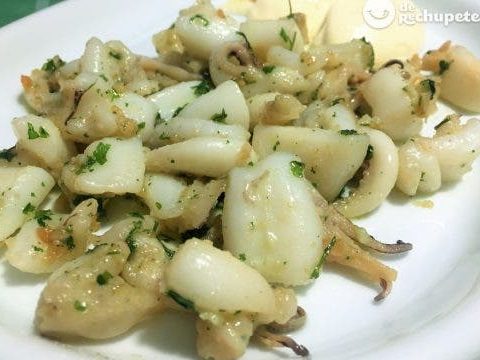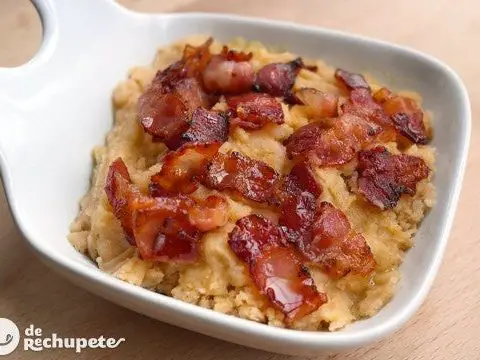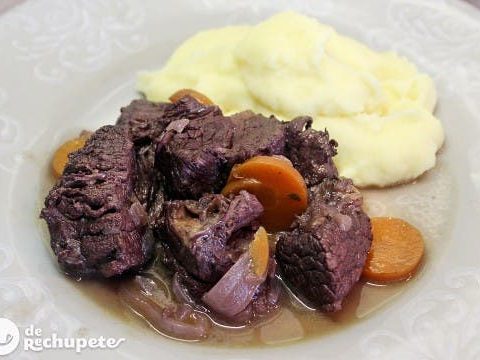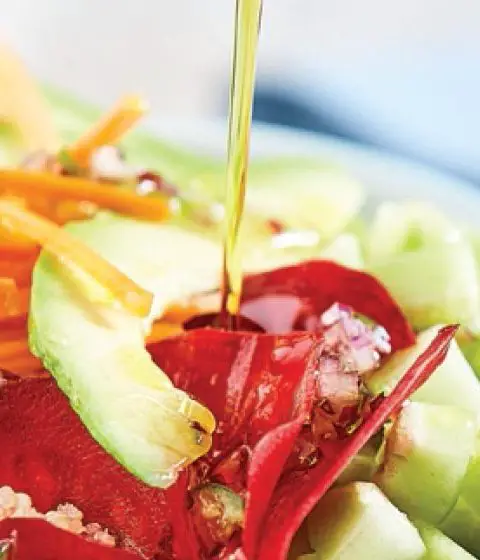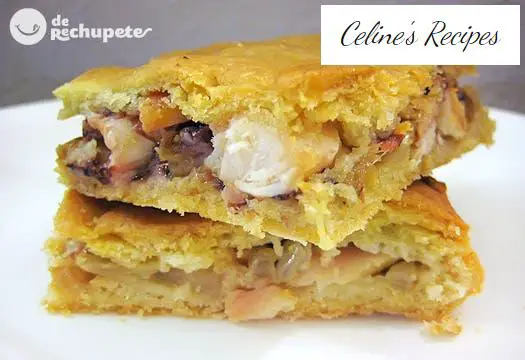
Info.
- Half
- 90 minutes
- For 8 people
- 2.8 € / person
Galician octopus empanada recipe . When I was little my mother or my grandmother used to prepare me millet potatoes with buttermilk for dinner . I remember that I loved seeing my mother stirring the cornmeal in water, little by little, thickening to the exact point. That intense yellow cornmeal that was brought directly from the mills that were still in town, fond memories.
A recipe with octopus that will delight anyone who likes this ingredient, I also assure you that it will be perfect with all the secrets to cook the octopus and that it is cooked . So you will have no problems trying this empanada like in Galicia. A few years ago that flour was difficult to find and those dinners of hot millet dough that was cooling with cold milk gradually disappeared. In terms of doughs, many of you have already trusted the blog, homemade pizza dough is one of our best-known recipes, I am sure you will trust this pie again and its corn dough for Galician pie.
But nowadays, thanks to the Ecuadorian, Peruvian or Mexican culture present in Spain, we have corn flour in supermarkets again, yes, most of white corn. Anyway, it serves us both to prepare recipes of its impressive gastronomy and delicious Galician empanadas.
It is common to find this dough and its empanadas all over the Galician coast, from Pontevedra to Coruña. It is usually associated with seafood and peixe fillings: octopus , cockles or croques, xoubas, sardines, eels … It is a little more coarse than that of wheat, although you can control the flour mixture so that it comes out to your liking. Its elaboration is more complicated although it is worth it for its corn flavor that is only usually found in Galicia. I leave you with this empanada, a classic throughout Galicia.
Preparation of the octopus for the filling
Two things are very important in this recipe. First the quality of the octopus, Galician octopus is my recommendation. And second, softening the octopus before cooking, I have seen how they did it by hitting it against the stone on the Island of Ons but luckily if we freeze it the result is practically the same, it helps the meat to be more tender. So all we have to do is freeze it if we have bought it fresh or buy it directly frozen.
- We take the octopus out a day before the freezer and put it in the fridge to defrost. It is important to do it in a saucepan or a large bowl because it will release a lot of liquid and it can overflow. At the time of cooking we pass it a little through cold water to remove possible impurities.
- We put a casserole (the largest we have) on the fire with water and a whole peeled onion, we do not add salt. When it starts to boil we add the octopus, we take it by the head and “we scare it”, this technique consists of putting the octopus in and out 3-4 times from the pot to get the octopus to stay stiff and the skin does not fall off during cooking.
- We cook the octopus for about 40-45 minutes on medium heat depending on the size. You have to click it from time to time to see how hard it is. The first time you cook it, it will cost you to take the point but then it will come out pearl-free.
- When we finish cooking the octopus we let it rest for a few minutes and then we take it out to a source.
- We must reserve part of the water where the octopus has cooked because we will add it to the dough when we prepare it.
- We cut the octopus with kitchen scissors, the legs into pieces 1 cm thick and the head into small pieces.
- We cut the onion into thin julienne strips, that is, into thin strips. We put a saucepan with oil on the fire and when it is hot add the 4 onions. We spend about 10 minutes over medium heat until they are transparent and poached. We remove the onion with a slotted spoon and move to a plate.
- We separate the excess oil in a glass. It is important to remove the excess oil so that the filling is juicy and at the same time to use it in the preparation of the dough, as I explain later. We have everything ready to move on to the next step: the dough.
Preparation of corn dough
We already have the compango cooling, the excess oil in the glass and now we can already prepare the corn dough.
- In a large bowl we introduce the 2 types of flour, mix well by hand. We leave about 4 tablespoons of wheat flour to later fatten the dough.
- In the center of the bowl, with a spoon, make a hole and pour the yeast dissolved in the octopus water.
- Beat with a wooden spoon from the center outwards and gradually mix with the flour.
- We add the oil from the sauce and the salt (it is important that the salt and the yeast do not come into direct contact, in this way that I explain you will not have a problem in the fermentation process). We continue removing what begins to be the dough. For now it will be a sticky but firm mix. This dough does not bind like wheat and does not stretch as well, so we must have a little patience and go little by little.
- We prepare the area where we are going to knead, for example the kitchen counter is perfect. Fill the area of the counter with leftover wheat flour, remove the dough from the bowl and start working the dough with your hands.
- Little by little we can manipulate the dough, it is as if it were a rough and fibrous paste that melts in the hand, we turn the dough into a ball. We take the previous bowl and flour it. We introduce the dumpling into it.
- We cover the bowl with a cotton cloth for about 45 minutes and there we have the dough to start preparing the octopus empanada or the one that we like the most.
Preparation of the octopus pie
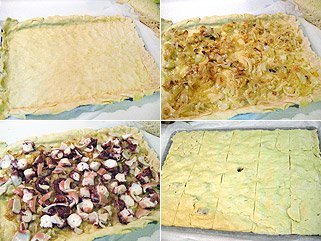
- We divide the empanada dough into two similar parts. We knead them again in two balls of dough to be able to work well with them.
- We flour the kitchen counter and roll out the dough with the rolling pin. We make the base that will be the size of the baking tray. We will stretch it with the help of the roller taking care that it does not break much. We put on the tray a piece of baking paper and on top the base cutting the excess if needed. Surely you will have holes, you cover these with small pieces of dough that we crush with our hands and apply them as if it were a “patch”, joining the container pressing with our fingers.
- When we have the base more or less smooth, we add the filling. It is very important that the filling is cold so that the dough holds up well. First a layer of onion well drained of oil (drained but somewhat oily and juicy so that it comes out very rich) and distribute it throughout the base. Then we put a layer of the octopus that we have reserved covering well all the onion. And finally we sprinkle with sweet paprika from La Vera.
- Cover with the other half in the same way as the base, in small portions until it is well covered and no octopus is visible. In this empanada it is not necessary to braid since the dough is in itself well sealed. Furthermore, this dough has the property of absorbing the excess oil and the filling juice very well.
- With a fork we prick through different areas and with a knife we indicate the future portions of the empanada distribution, if not later it will be difficult for us to cut it.
- We decorate with strips or cords of the excess pasta.
- We paint the empanada with part of the oil left over from the filling with the help of a kitchen brush.
- We preheat the oven to 220º C for 5 minutes and then put the empanada to 190º C, first in the bottom of the oven (about 20 minutes) and then another 20 minutes in the center. When it is golden brown, we remove it.
And finally the empanada! Be careful when removing it from the tray because it will still be hot and it is easy to break. Cut it by the signs we have previously made and carefully remove. Bon Appetite.
You can already prepare a lot of recipes with octopus, from the classic Galician octopus , an original baked octopus , as they do in Mugardos, to Mugardesa (in the form of a stew), to Sochantre , candied (one of the recipes Picasso’s favorites), in tempura, accompanying a rice or risotto … or as in this case, grilled. Use the heads to make croquettes , lots of ideas to enjoy that delicacy.
Be sure to enjoy all the recipes for fish and seafood that we have on the blog, I assure you that you will find a lot of ideas to make yours much happier.
